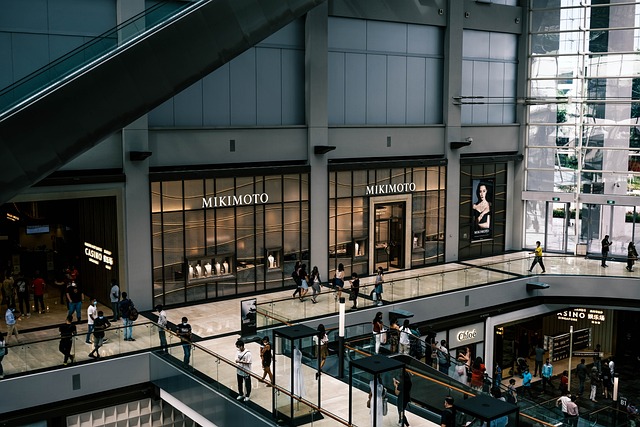By Greg Sugar, President — LineZero
The retail sector is constantly evolving. The rise of online shopping and e-commerce platforms like Amazon have revolutionized the convenience of the consumer experience, allowing consumers to buy virtually whatever they want online and have it delivered to their doorstep in days or even hours. Many brick-and-mortar retailers sought to combat this by introducing options like curbside pickup, where consumers can order items online and have them brought out to their car by an employee.
However, despite the increasing convenience of these options, consumers are still unwilling to abandon the brick-and-mortar retail experience entirely. A report by Capital One shows that 72% of consumers still shop in stores on a weekly basis, and the retail sector has experienced year-over-year growth, with the exception of 2020 (during the height of the COVID-19 pandemic).
Whether it’s to see or feel products in person before making a buying decision or to connect with a real-life employee for service with a human touch, it’s clear that people still want the option of a brick-and-mortar storefront, even though e-commerce options are becoming increasingly convenient. Still, even though brick-and-mortar storefronts are an integral part of the retail sector, there are still remote and hybrid aspects of the business’s operation.
Challenges of Remote Management of Retail Operations
Physical storefronts are merely one piece of the puzzle that embodies a retail business. While this aspect of retail operations can not be completed remotely, several functions within retail operations can be completed by employees working from home.
For instance, businesses in the retail sector must make certain remote work considerations when it comes to corporate management. When retail chains become large, they often have storefronts in multiple cities, states, and even countries. These retail locations are frequently managed by a central corporate office that could be on the opposite side of the globe from some storefronts. Thus, remote management of retail operations becomes key to the business’s success, and a connection must be established between remote and in-person teams.
One of the critical challenges that retail businesses face — especially when they scale to a point where remote management is necessary — is ensuring equal access to information. If employees at different levels or locations of the company use different technologies, it creates a gap in the information they have access to, known as a communication silo. For example, the team at a brick-and-mortar storefront may use a point-of-sale system to keep track of inventory, while a warehouse team may have a different inventory management system.
How Cloud Solutions Can Fix The Challenges of Remote Management of Retail Operations
The solution to these problems is to equalize access to technology across different teams and geographic locations. The cloud is a powerful technology that has proven capable of ensuring that employees can have access to the information they need, when they need it, from wherever they are in the world.
Of course, the most important effect of implementing these technologies is that they help foster a greater sense of community and boost team collaboration among the organization’s employees. Employees at different retail locations tend to be separated by physical and hierarchical distance, but by bringing them all together and giving them access to shared resources with the help of cloud technology, they can foster a greater sense of togetherness.
Implementing cloud solutions will also benefit employee efficiency in retail operations. Cloud technology allows workers to collaborate and share information in real time, keeping every employee up-to-date on essential operational information. For example, access to real-time inventory tracking via cloud platforms allows retailers to conduct better predictive analytics and stock inventory based on better snapshots of supply and demand.
This technology can have surprising implications on the customer experience as well. For example, if two locations of a retail business are on a shared platform, they can access each other’s inventory information. Say a customer walks into one location looking for an item, and that location is out of stock. With the help of this technology, the employees at that location can point the customer to another location where the item is available. This example is just one of many ways employees can improve the customer experience with the help of cloud technology.
Ultimately, the key to a successful hybrid model in the retail sector is establishing connections and collaboration between in-person and remote teams. Although some functions in a retail organization are inherently in-person, these brick-and-mortar operations are one aspect of a large and complex organizational web. Adopting tools like cloud technology is the key to unlocking this greater connection between various employees in a retail operation.
About the author
 — Greg Sugar is a passionate advocate for the impact of technology on the human experience and the future of work. With over 15 years of experience in digital and IT strategy, operations, infrastructure architecture, cloud, and business process optimization, he has served as a trusted advisor to numerous Fortune 500 companies in their technology investments and transformations.
— Greg Sugar is a passionate advocate for the impact of technology on the human experience and the future of work. With over 15 years of experience in digital and IT strategy, operations, infrastructure architecture, cloud, and business process optimization, he has served as a trusted advisor to numerous Fortune 500 companies in their technology investments and transformations.
Related Articles

Hexnode CEO on how the “Holiday Illusion” is Masking the Risks of Retail’s Seasonal Workforce
The danger of seasonal hires is magnified not just by who is accessing the network, but when they are doing it. Sophisticated threat actors possess a deep understanding of the retail operational calendar.

The New Frugality: How Inflation and Tariffs Are Reshaping Consumer Spending
One of the most telling shifts is how shoppers approach decision-making. Where convenience once dominated, consciousness now plays a larger role. People are researching more before making a purchase, comparing prices across multiple platforms, and questioning whether they really need the product in the first place.

Embracing new concepts vs the return to brick-and-mortar
Balancing the return to physical retail and the development of new technologies to enhance customer experience and drive operational efficiency for long-term success.
Enartis to Acquire Parsec in Winemaking and Retail Deal
The deal will bring Enartis and Parsec together to help wineries manage every part of production more easily and efficiently, from grape to bottle.


 for the latest news and job opportunities in retail tech
for the latest news and job opportunities in retail tech 